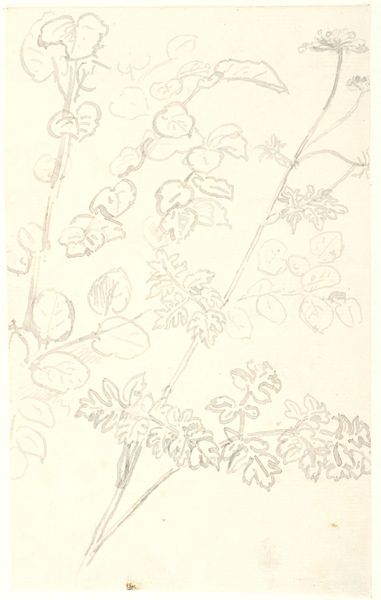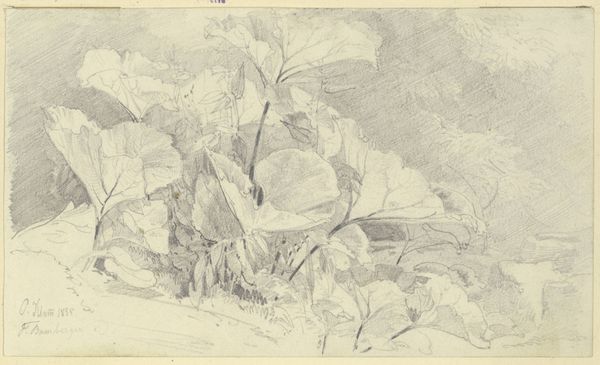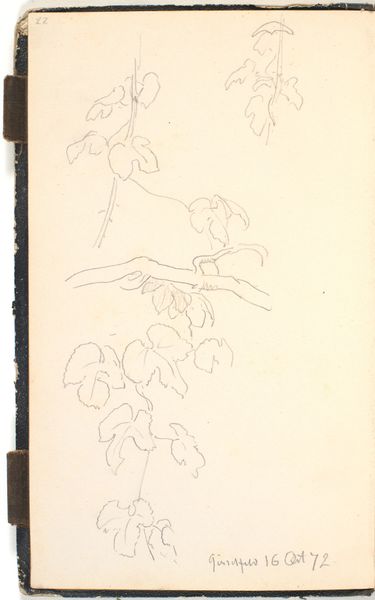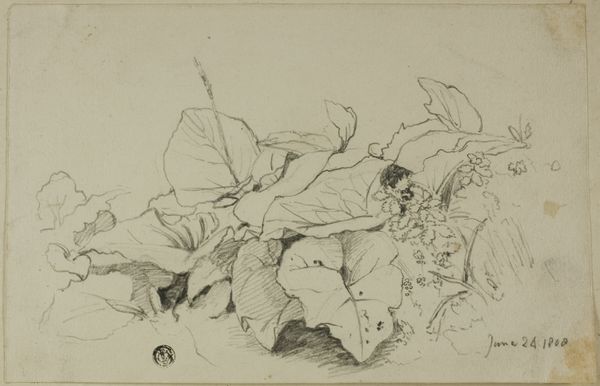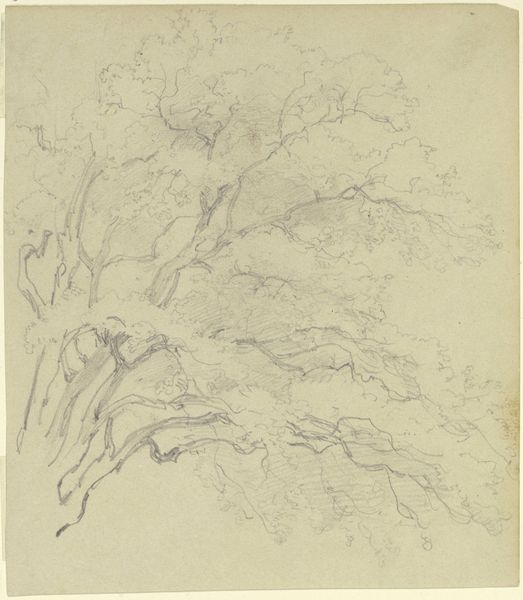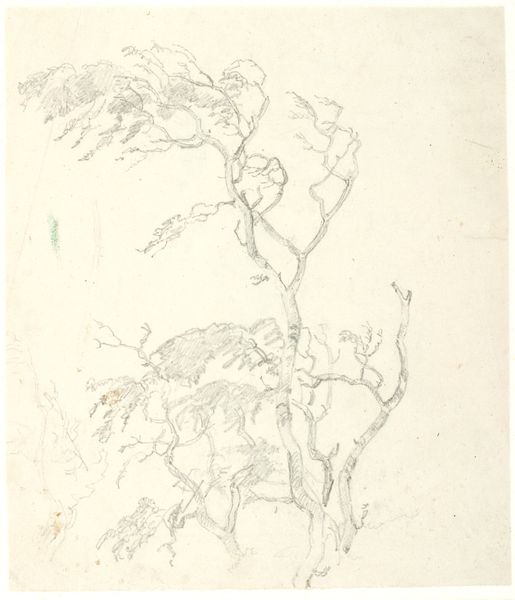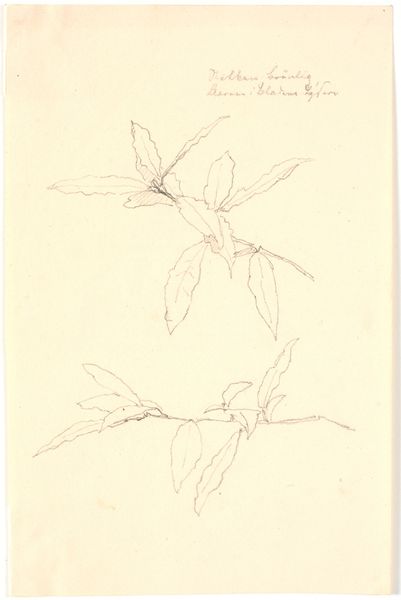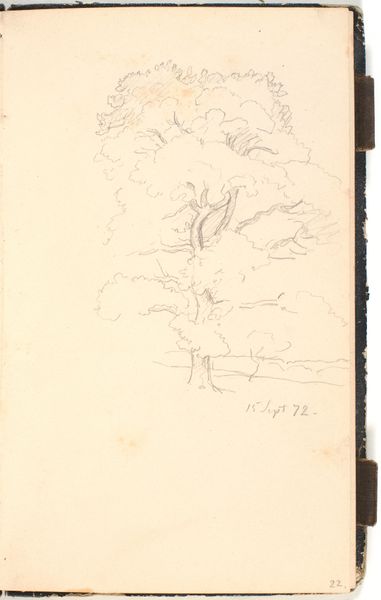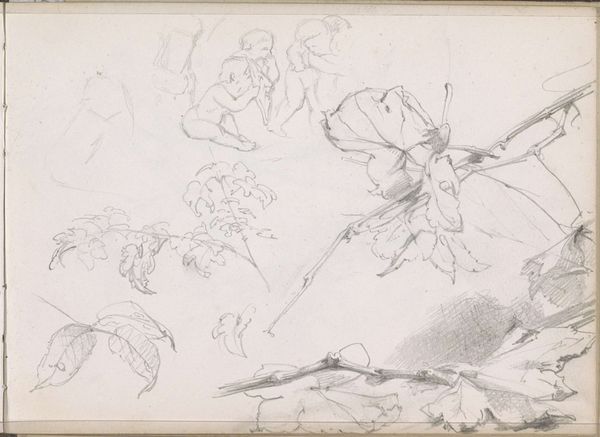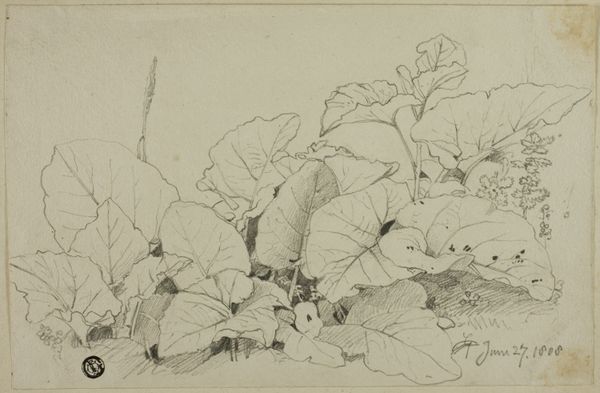
drawing, pencil
#
drawing
#
romanticism
#
pencil
#
botanical drawing
#
realism
Dimensions: 398 mm (height) x 316 mm (width) (bladmaal)
Curator: At first glance, this strikes me as a meditation—austere, almost academic in its precise renderings. Editor: Yes, what you're sensing is likely Dankvart Dreyer's meticulous hand at work. He produced this drawing, "Bladstudier"—or "Leaf Studies"—sometime in the 1840s. Curator: Studies are such curious objects, aren’t they? They show an artist engaging deeply with form, divorced, perhaps, from overt narrative demands, making them feel immediate. The stark pencil strokes suggest a focus on shape rather than detail; however, I am most intrigued by these numerous hearts, some barely there, ghostly and then these others at the forefront in plain sight. They are leaves yes but their forms resemble hearts... Editor: I completely agree. Dreyer was working during the Danish Golden Age, a period highly influenced by Romanticism, and this study showcases its influence perfectly. Think of the role botany played in shaping romantic thought during that period. These "leaf studies" are less of a botanical record than they are reflections of a growing awareness for nature in Denmark during that time. They also coincide with emerging artistic styles; notice the hints of Realism here. Curator: It is all an unfolding discovery as the pencil breathes life into the leaves. We read Romanticism through feeling, the way that light almost washes over these studies… Editor: Which makes the selection and arrangement feel deliberate. What can you tell us about that, Curator? Curator: Placement directs the gaze; it's meant to reveal how nature's complexity also conveys subtle messages of symbolism, particularly those "hearts" at the top fading away while others bloom. Editor: The way the image encourages this close, sustained looking…it's almost a political act, don't you think? A way to assert value in observation. And you know, the SMK—the Statens Museum for Kunst— where this work is held, also played a vital role in shaping Danish national identity through its collection. Curator: Precisely! The act of studying nature, of observing these botanical forms, is aligned with broader social and artistic movements; it speaks of finding new meanings during a shifting cultural landscape. I will forever see the heart in a leaf... Editor: Thank you; now, that kind of sustained observation can illuminate something universal and give a single leaf newfound significance within a larger cultural understanding.
Comments
No comments
Be the first to comment and join the conversation on the ultimate creative platform.

